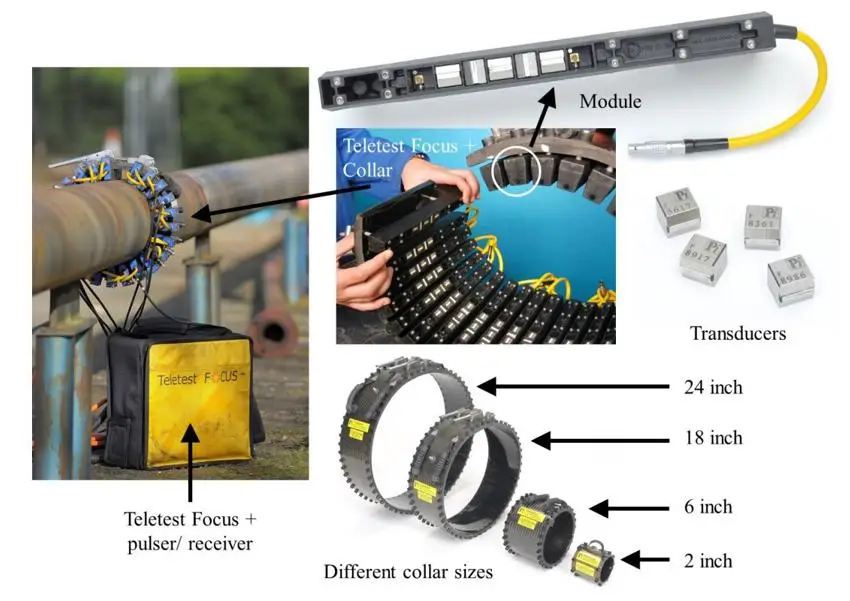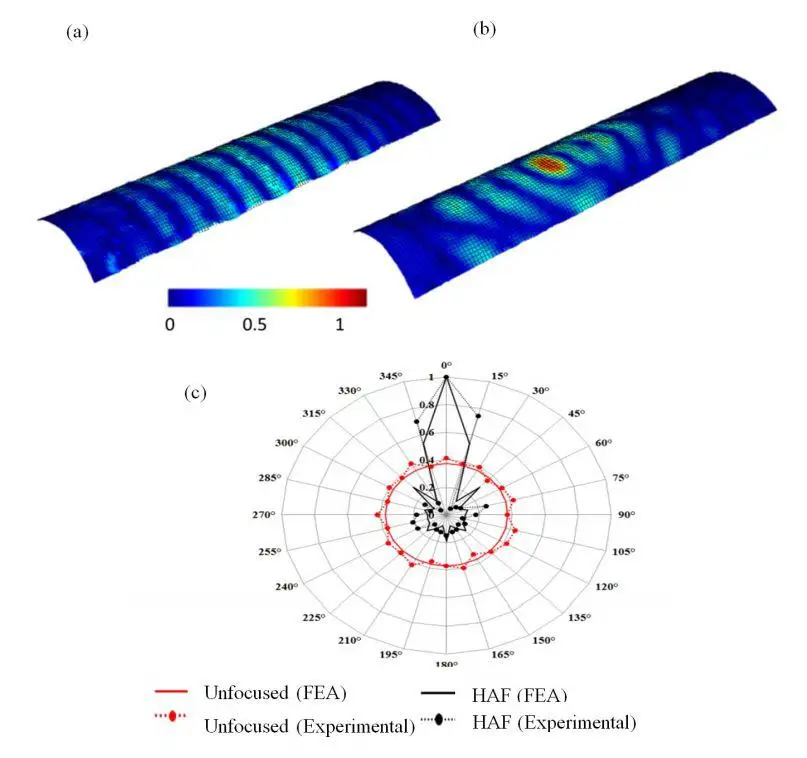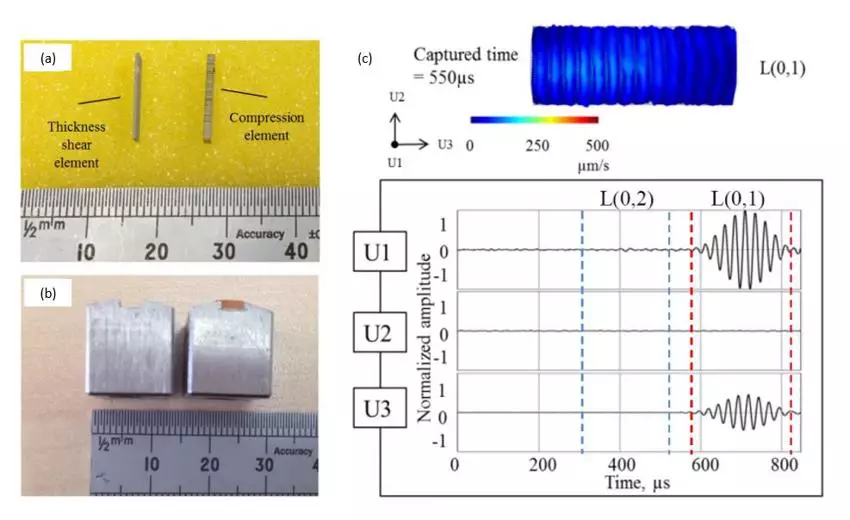Pipelines are used extensively in industry for large-scale distribution of fluids such as crude oil and water. There are millions of miles of pipeline in the world for fluid distribution. Pipelines are a significant yet ageing asset. As pipelines age, corrosion flaws can develop, and it is therefore important to assess the structural integrity for its continuous operation. Defective pipelines can lead to fatalities, property damage, litigation and damage to the environment.
Conventional inspections techniques are expensive and time-consuming; hence Ultrasonic Guided Wave (UGW) inspection has attracted considerable interest as a Non-Destructive Testing (NDT) technique in the past two decades. UGW based techniques offer the advantage of full volumetric inspection of tens of metres of pipeline from a single test location. Initially, UGW was developed as a low-resolution rapid screening technique to find relatively large defects, i.e. patch of corrosion.
 Illustration of the key components of Teletest® Focus+ UGW system
Illustration of the key components of Teletest® Focus+ UGW system
However, there is a need to expand the knowledge on the UGW inspection to allow more complex structures to be inspected and quantify smaller defects. If a flaw was detected in a pipe buried in the soil, it needs to be dug out and inspected using a high-resolution inspection technique to get quantitative information to state the health of the structure which is still a costly activity. The pipe inspection would be cost-effective if UGW can provide quantitative measurements of flaws.
This can be accomplished by introducing advance signal processing techniques and/or transducers development to enhance the resolution and sensitivity of the UGW inspection.
Contribution to the knowledge from this research project begins with the development of a sound energy focusing technique to enhance the resolution and the sensitivity of anomalies. The proposed technique is a hybrid sound energy focusing technique which combines numerical/analytical simulation with active focusing and the time-reversal concept. Performance of the proposed technique is compared against the sound energy focusing techniques described in the literature (i.e. active focusing, synthetic focusing and time-reversal focusing).
Then, the first longitudinal guided wave mode was studied with respect to adopting it as an incident mode. This enhances the resolution and sensitivity as it inherits a higher number of flexural modes in an operating frequency. Appropriate transduction techniques were suggested, and the resolution and sensitivity were compared to the existing probing modes.
 Experimental results (a) Isometric view of surface velocity from an unfocused excitation (b) Isometric view of surface velocity from the Hybrid Active Focusing (HAF) excitation and (c) Polar plot comparing normalized amplitude from the FE analysis with experimental results at the focus position.
Experimental results (a) Isometric view of surface velocity from an unfocused excitation (b) Isometric view of surface velocity from the Hybrid Active Focusing (HAF) excitation and (c) Polar plot comparing normalized amplitude from the FE analysis with experimental results at the focus position.
Later on, the potential of flaw sizing was studied using the first longitudinal guided wave mode.
 Developed novel high resolution transducer (a) thickness of the PZT elements (b) bespoke transducer and (c) 3D-LDV experimental results of waveform generated by novel transducers.
Developed novel high resolution transducer (a) thickness of the PZT elements (b) bespoke transducer and (c) 3D-LDV experimental results of waveform generated by novel transducers.
Meet the Principal Investigator(s) for the project

Dr Nikolaos Boulgouris - Nikolaos Boulgouris is a Reader (Associate Professor) with the Department of Electronic and Electrical Engineering of Brunel University of London. From 2004 to 2010 he was an academic member of staff with King's College London, and before that he was a researcher with the Department of Electrical and Computer Engineering of the University of Toronto, Canada.
Nikolaos has published more than 100 papers in international journals and conferences (Google scholar search) and he has participated in numerous national and international research consortia. Dr. Boulgouris served as Senior Area Editor for the IEEE Transactions on Image Processing. In 2018 he served as Technical Program Chair for the IEEE International Conference on Image Processing (ICIP). In the past he served as Associate Editor for the IEEE Transactions on Circuits and Systems for Video Technology, from which he received the 2017 Best Associate Editor Award, and also as Associate Editor for the IEEE Transactions on Image Processing, and the IEEE Signal Processing Letters. He was co-editor of the book Biometrics: Theory, Methods, and Applications, which was published by Wiley - IEEE Press, and guest co-editor for two journal special issues. He served an elected member of the IEEE Multimedia Signal Processing Technical Committee (MMSP - TC). From 2014 to 2019, he served as an elected member of the IEEE Image, Video, and Multidimensional Signal Processing Technical Committee (IVMSP - TC). Dr. Boulgouris is a Senior Member of the IEEE and a Fellow of the Higher Education Academy.
Please go to https://people.brunel.ac.uk/~eestnnb/ for more details.
Related Research Group(s)
AI Social and Digital Innovation - Social, economic and strategic effects of AI and associated technologies. Impact of AI and related technologies on societies, organisations and individuals.
Partnering with confidence
Organisations interested in our research can partner with us with confidence backed by an external and independent benchmark: The Knowledge Exchange Framework. Read more.
Project last modified 21/11/2023